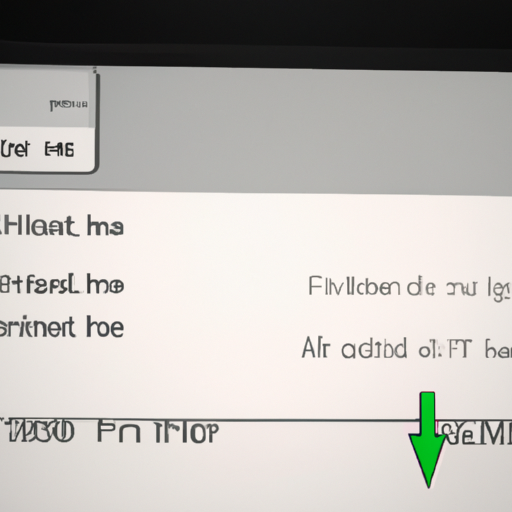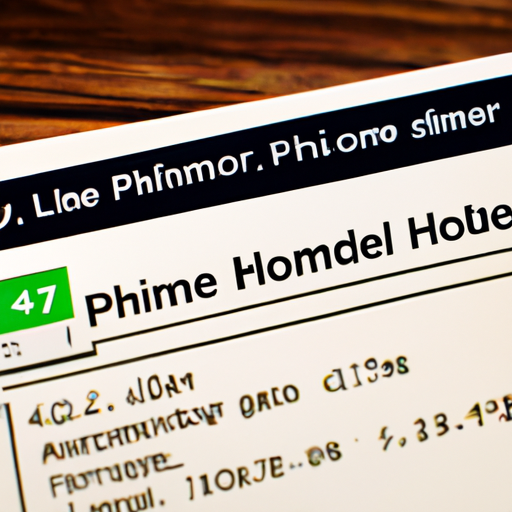How to Fix the Issue of PDFs Saving as Chrome HTML Files in Windows 10
If you’re having trouble saving PDFs as PDFs in Windows 10, don’t worry—it’s a common issue. Fortunately, it’s easy to fix. Here’s what you need to do:
1. Open the Chrome browser and click the three-dot menu icon in the top-right corner.
2. Select “Settings” from the drop-down menu.
3. Scroll down to the bottom of the page and click “Advanced.”
4. Scroll down to the “Downloads” section and make sure the “Ask where to save each file before downloading” option is checked.
5. Scroll down to the “PDF Documents” section and make sure the “Open PDF files in the default PDF viewer application” option is checked.
6. Click “OK” to save your changes.
That’s it! Now, when you try to save a PDF, you should be prompted to choose a location and the file should save as a PDF. If you’re still having trouble, you may need to update your PDF viewer application.
Troubleshooting Tips for Fixing the Issue of PDFs Saving as Chrome HTML Files
If you’re having trouble saving PDFs as PDFs in Chrome, don’t worry! Here are some troubleshooting tips to help you get back on track.
1. Check your Chrome settings: Make sure that your Chrome settings are set to download PDFs instead of HTML files. To do this, go to Chrome Settings > Advanced > Privacy and Security > Content Settings > PDF Documents. Make sure that the setting is set to “Download PDF files instead of automatically opening them in Chrome.”
2. Clear your browser cache: Clearing your browser cache can help resolve any issues with PDFs not downloading correctly. To do this, go to Chrome Settings > Advanced > Clear Browsing Data. Select “Cached images and files” and click “Clear Data.”
3. Disable Chrome extensions: If you have any Chrome extensions installed, try disabling them to see if that helps. To do this, go to Chrome Settings > More Tools > Extensions. Toggle off any extensions that you don’t need.
4. Update Chrome: Make sure that you’re running the latest version of Chrome. To do this, go to Chrome Settings > About Chrome. If there is an update available, click “Update.”
Hopefully, one of these tips will help you get your PDFs saving correctly in Chrome. If you’re still having trouble, you may need to contact your IT department for further assistance.
Exploring the Causes of PDFs Saving as Chrome HTML Files and How to Resolve Them

Have you ever tried to save a PDF file only to find that it has been saved as a Chrome HTML file instead? This can be a frustrating experience, but don’t worry – there are a few simple steps you can take to resolve the issue. In this article, we’ll explore the causes of PDFs saving as Chrome HTML files and how to resolve them.
The most common cause of PDFs saving as Chrome HTML files is a problem with the browser settings. If your browser is set to save files as HTML by default, then any PDFs you try to save will be saved as HTML instead. To resolve this issue, you’ll need to change your browser settings so that PDFs are saved as PDFs.
Another possible cause of PDFs saving as Chrome HTML files is a problem with the PDF viewer. If your PDF viewer is not up to date, then it may not be able to properly display PDFs. To resolve this issue, you’ll need to make sure that your PDF viewer is up to date.
Finally, if you’re using an older version of Chrome, then it may not be able to properly display PDFs. To resolve this issue, you’ll need to upgrade to the latest version of Chrome.
We hope this article has helped you understand the causes of PDFs saving as Chrome HTML files and how to resolve them. If you’re still having trouble, then you may need to contact your browser or PDF viewer’s customer support team for further assistance.
Understanding the Difference Between PDFs and Chrome HTML Files and How to Avoid the Issue
PDFs and Chrome HTML files are two different types of files that can be used to store and share information. While they both have their advantages, it is important to understand the differences between them in order to avoid any potential issues.
PDFs, or Portable Document Format files, are a type of file that is designed to be viewed and printed in the same way regardless of the device or software used to open it. PDFs are often used to share documents that need to be printed or viewed in a specific format, such as contracts, forms, and other documents.
Chrome HTML files, on the other hand, are webpages that are saved in the Chrome browser. These files are designed to be viewed in the Chrome browser, and they may not look the same when opened in other browsers or programs. Chrome HTML files are often used to save webpages for offline viewing, or to share webpages with others.
The main difference between PDFs and Chrome HTML files is that PDFs are designed to be viewed and printed in the same way regardless of the device or software used to open them, while Chrome HTML files are designed to be viewed in the Chrome browser. This means that if you are sharing a document with someone, it is important to make sure that you are sending the correct file type. If you send a Chrome HTML file when a PDF is needed, the recipient may not be able to view the document correctly.
In order to avoid this issue, it is important to make sure that you are sending the correct file type. If you are sending a document that needs to be printed or viewed in a specific format, it is best to send a PDF. If you are sending a webpage, it is best to send a Chrome HTML file.
By understanding the differences between PDFs and Chrome HTML files, you can ensure that your documents and webpages are viewed correctly by the recipient.
Best Practices for Ensuring PDFs Save Properly and Don’t Become Chrome HTML Files
1. Make sure you are using the latest version of Adobe Acrobat: Adobe Acrobat is constantly updating their software to ensure that PDFs save properly and don’t become Chrome HTML files. Make sure you are using the latest version of Adobe Acrobat to ensure that your PDFs are saved correctly.
2. Check the file type: Before you save your PDF, make sure that the file type is set to PDF. If it is not, you may end up with a Chrome HTML file instead of a PDF.
3. Use the Save As command: When saving your PDF, make sure to use the Save As command instead of the Save command. This will ensure that the file is saved as a PDF and not as a Chrome HTML file.
4. Check the file extension: When you save your PDF, make sure that the file extension is .pdf. If it is not, you may end up with a Chrome HTML file instead of a PDF.
5. Use a reliable PDF creator: Make sure you are using a reliable PDF creator to ensure that your PDFs are saved correctly.
6. Check the file size: When you save your PDF, make sure that the file size is not too large. If it is, you may end up with a Chrome HTML file instead of a PDF.
7. Check the file format: When you save your PDF, make sure that the file format is set to PDF. If it is not, you may end up with a Chrome HTML file instead of a PDF.
8. Use a reliable web browser: Make sure you are using a reliable web browser to ensure that your PDFs are saved correctly.
Following these best practices will help ensure that your PDFs save properly and don’t become Chrome HTML files.
